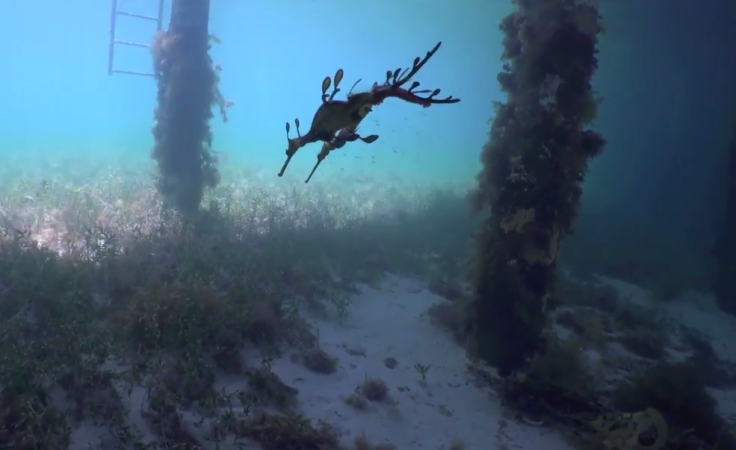Diver captures first ever footage of weedy seadragons having sex
The footage shows the entire mating process between the common seadragons.
A photographer and diver in Australia has managed to capture what is believed to be the first known footage of seadragons having sex.
Pang Quong filmed the weedy seadragons (otherwise known as the common seadragon) while diving in the Mornington Peninsula in Victoria in July.
The footage shows the moment that the female seadragon transfers her eggs onto the male's tail. It is during this process that the eggs are fertilised.
Speaking to ABC, Quong said: "They swam together, put the bases of their tails together and then just slowly rose to the surface.
"The female releases a stream of eggs and then like a magician with cards, they magically transfer across to the male's tail and then they actually float up and make contact with the tail and bingo, they're there."
"I was really quite terrified that the camera wasn't actually working because there'd be nobody, nobody would believe what I'd just seen."
He had witnessed the courtship dance between seadragons before but never the whole act in its entirety.
With funds under strain, the number of professional scientists and experts in the field have been cut down meaning many new discoveries such as this are made by citizen scientists such as Quong.
But Quong's regular trips have made him a local expert that big production companies have relied upon when making wildlife documentaries.
Marine biologist Sheree Marris said she expected a call from Sir David Attenborough regarding the footage, she said: "David Attenborough has actually put together a documentary based on different marine animals and one of them included the weedy seadragon which Pang was involved in. So I'm sure he'll be really thrilled that we've learnt this new aspect of the seadragon biology. He'll be really excited."
The weedy seadragon, also known as the common seadragon, is a type of marine fish related to the seahorse. Some can reach almost half a metre long. They are commonly found in the waters around southern Australia, the Eastern Indian Ocean and the South Western Pacific Ocean.

© Copyright IBTimes 2025. All rights reserved.





















